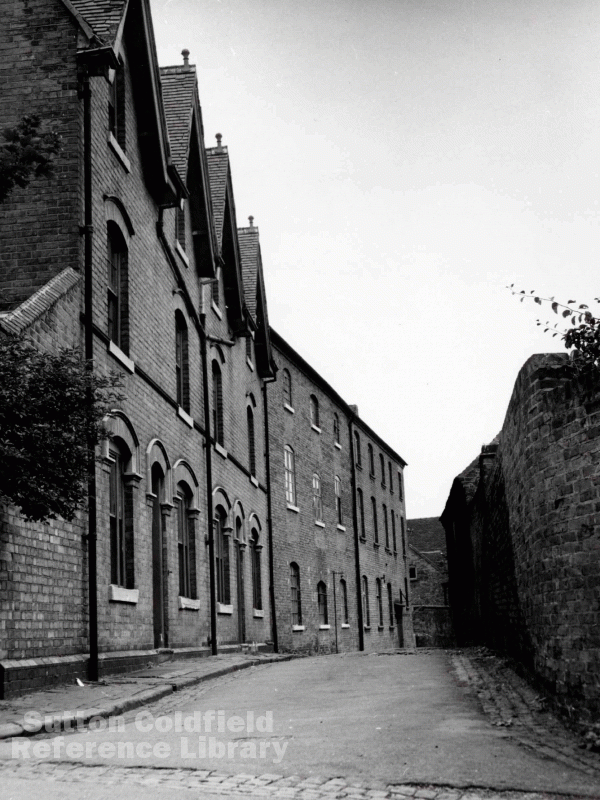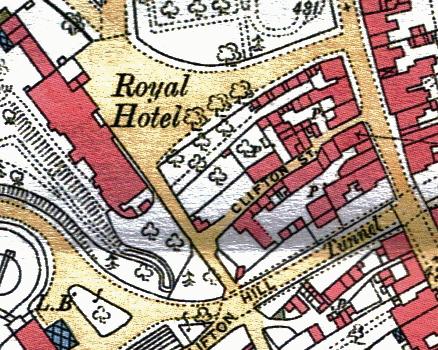Clifton Street is one of several roads in Sutton to have been obliterated by redevelopment; for example, the Gracechurch Centre now stands on what used to be Avenue Road, and Newhall Street is somewhere underneath Newhall Walk. Clifton Street ran next to the Three Tuns from High Street to the top of the Reddicroft, parallel to Railway Road and King Edward Square. In 1800 neither Railway Road nor King Edward Square existed, and Clifton Street was the only side road off High Street.
The early history of High Street is obscure. In his recent book, The Archaeology of Sutton Park”, Mike Hodder suggests that the original Sutton Park of c.1110 extended as far east as High Street and Lichfield Road. Another theory is that the manorial lord replanned the town early in the twelfth century, laying out burgage plots along High Street. Houses were built on the burgage plots, each plot with a frontage of fifteen to twenty yards and a large garden at the rear, and occupied by the wealthier inhabitants. A driveway between two plots, later known as Clifton Street, gave access to the fields beyond.
Clifton Street probably derives its name from Thomas Clifton, who came to live in Sutton in 1646, setting up his trade as a dyer and shearman in a house in High Street which now forms part of the Three Tuns Hotel. He extended the house, and his sons continued to build at the back, so it was already a large property when it was converted into the present Three Tuns in the eighteenth century. Stables were built at the rear, facing into the courtyard, so that most of the left-hand side of Clifton Street was bounded by a blank wall.
The burgage plot on the other side of the street had a more complicated history. In 1800 the property belonged to James Hughes, who, like Clifton, was in the textile trade - he was a wool factor. He lived in a house in High Street on the opposite corner of Clifton Street from the Three Tuns and owned the land behind as far as King Edward Square. Here he built a large wool warehouse fronting Clifton Street measuring 44 feet by 20 feet. Miss Holbeche, the Sutton Diarist, noted in 1862 that the High Street house was one of several in Sutton that had stayed in the same family for generations - the James Hughes who had the house in 1862 was a wealthy man with several properties in Sutton. Richard Holbeche remembered James Hughes and his brother Joseph in his “Diary” - recollections of his Sutton childhood in the 1850s - “two extraordinary characters, brothers James and Joseph Hughes. They were wool staplers, “warm” (i.e.wealthy) men and supposed to be misers. James survived Joseph for some years. Old James hated boys…he was very much given to saying disagreeable things about his neighbours.”
In 1860 James Hughes still owned the whole plot, but three cottages along Clifton Street and parts of the yard were let to tenants - the Groutage family, employed at the Powells Pool Spade mill, and James Eastwood, ostler at the Three Tuns, and his family. Holbeche referred to Clifton Street as “Cottons Entry where old George Eastwood lived, he had rickety legs, and his son also, just beyond was Hughes’ wool warehouse”.
In 1900 the Royal Sutton Laundry occupied the old wool warehouse; by 1960 the area was very run down and acquired by developers. All the buildings on either side of the Three Tuns were demolished in 1972 and the present offices were built by 1980, and Clifton Street was no more.

